Our group studies ultrafast dynamics of correlated quantum materials with femtosecond pump-probe optical spectroscopy. By probing the ultrafast dynamics of charge, spin, and lattice, we study the coupling of multiple degrees of freedom, photo-induced phase transition pathways, laser-induced novel quantum states, etc. The materials of interest include unconventional high-temperature superconductivity, charge density wave, Weyl semimetal, etc. In the following, we elaborate our research from the perspective of science and techniques.
Scientifically, our group focuses on the following 3 key scientific problems:
1, Studying the mechanism of superconductivity: ultrafast dynamics of unconventional high-temperature superconductivity under synergetic extreme conditions such as high pressure and ultrafast timescales.

Studying of high-temperature superconductivity and other correlated systems is one of the core areas of condensed matter physics. The formation of superconductivity is often accompanied with collective charge density wave, spin density wave, quantum spin liquid, Mott physics, etc. They arise from the complex interactions, long-range order, quantum fluctuations, etc. They form complex relations with superconductivity such as phase competition, evolution, coexistence, etc. There have been a lot of seminal research accomplishments in both theory and experiment. However, most of the studies are based on the ground state. Equally important is the study of excited states, which has been less investigated.
Our group mainly uses ultrafast optical spectroscopy to study the ultrafast dynamics in correlated quantum materials. For example, ultrafast optical spectroscopy can be used to measure the electron-phonon coupling constant, which is important for understanding whether phonon is the superconductivity pairing glue and the role of phonons in high-temperature superconductivity. We can detect the decrease of superconductivity gap by the phonon bottleneck effect and obtain superconductivity gap, superconductivity transition temperature, etc.
2, Laser-induced novel quantum states
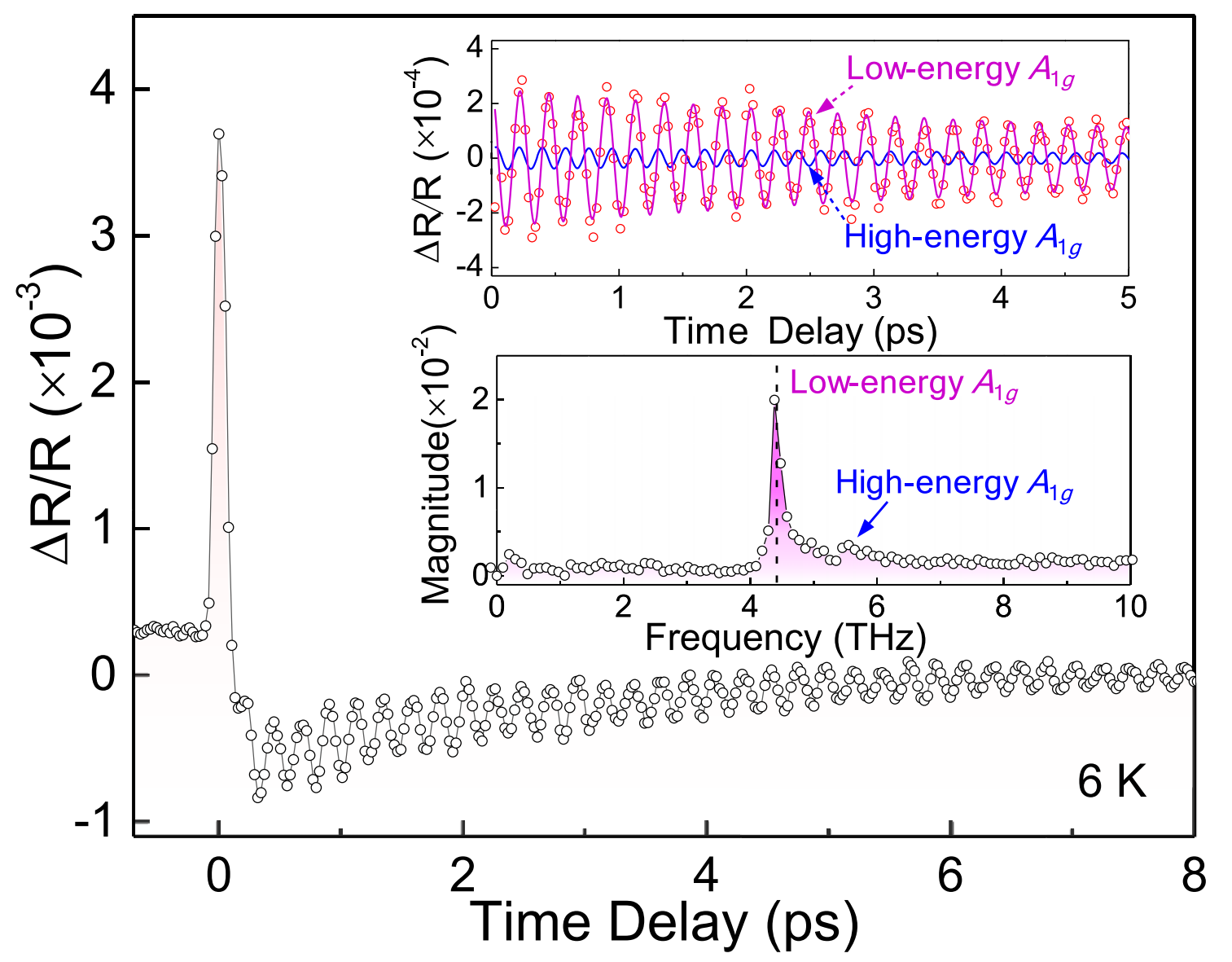
Complex quantum ground states are formed as a result of the coupling between lattice, charge, spin, and orbital. It is vital to understanding the coupling between multiple degrees of freedom. Compared to the equilibrium measurements, ultrafast non-equilibrium studies offer a unique perspective and advantage by decoupling the interactions and decay processes in different timescales.
Our group utilizes multiple techniques to track the evolution of different degrees of freedom, such as ultrafast optical spectroscopy, ultrafast second harmonic generation, ultrafast electron and x-ray diffraction. The study of the coupling process provides insights for control of quantum states.
3, Coupling of multiple degrees of freedom and ultrafast laser control of correlated materials
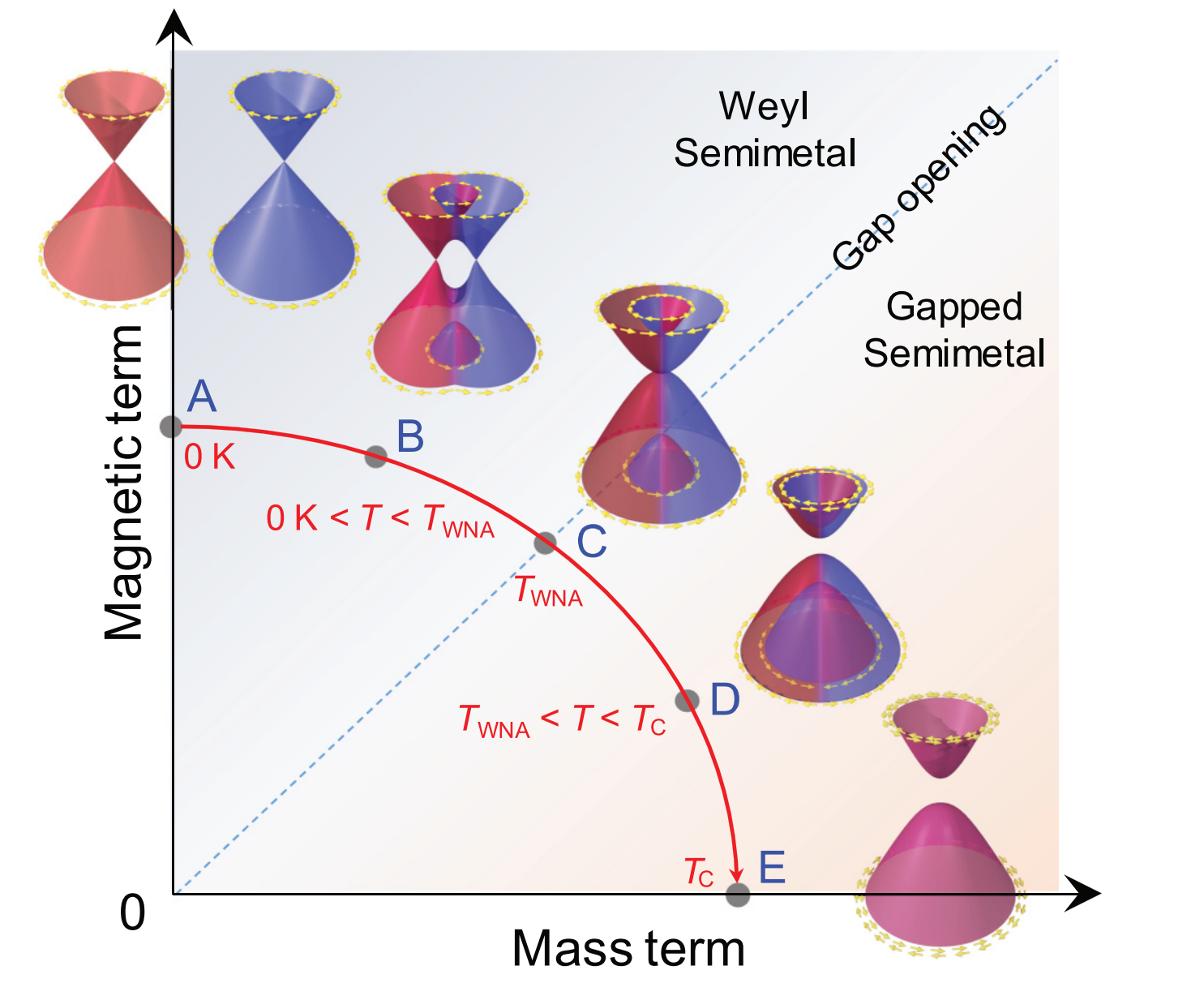
There usually exists phase competition or coexistence in superconducting and other strongly correlated materials. Laser excitation modifies the potential energy surface and the minimum energy pathways, breaking the equilibrium of phase competition or coexistence. Therefore, the system might be driven to new states that do not exist in nature. In recent years, ultrafast laser control of quantum states have become one of the forefronts of condensed matter physics.
Our group utilizes spatial self-phase modulation method and realized laser-induced electron/hole coherence in multiple materials. Team member Faran Zhou uses ultrafast laser pulse to tune the phase competition between to charge density wave states and drive the system to a hidden state that does not exist in equilibrium.
Technically, our group mainly uses the following ultrafast techniques:
1, On site in-situ high pressure ultrafast pump-probe spectroscopy
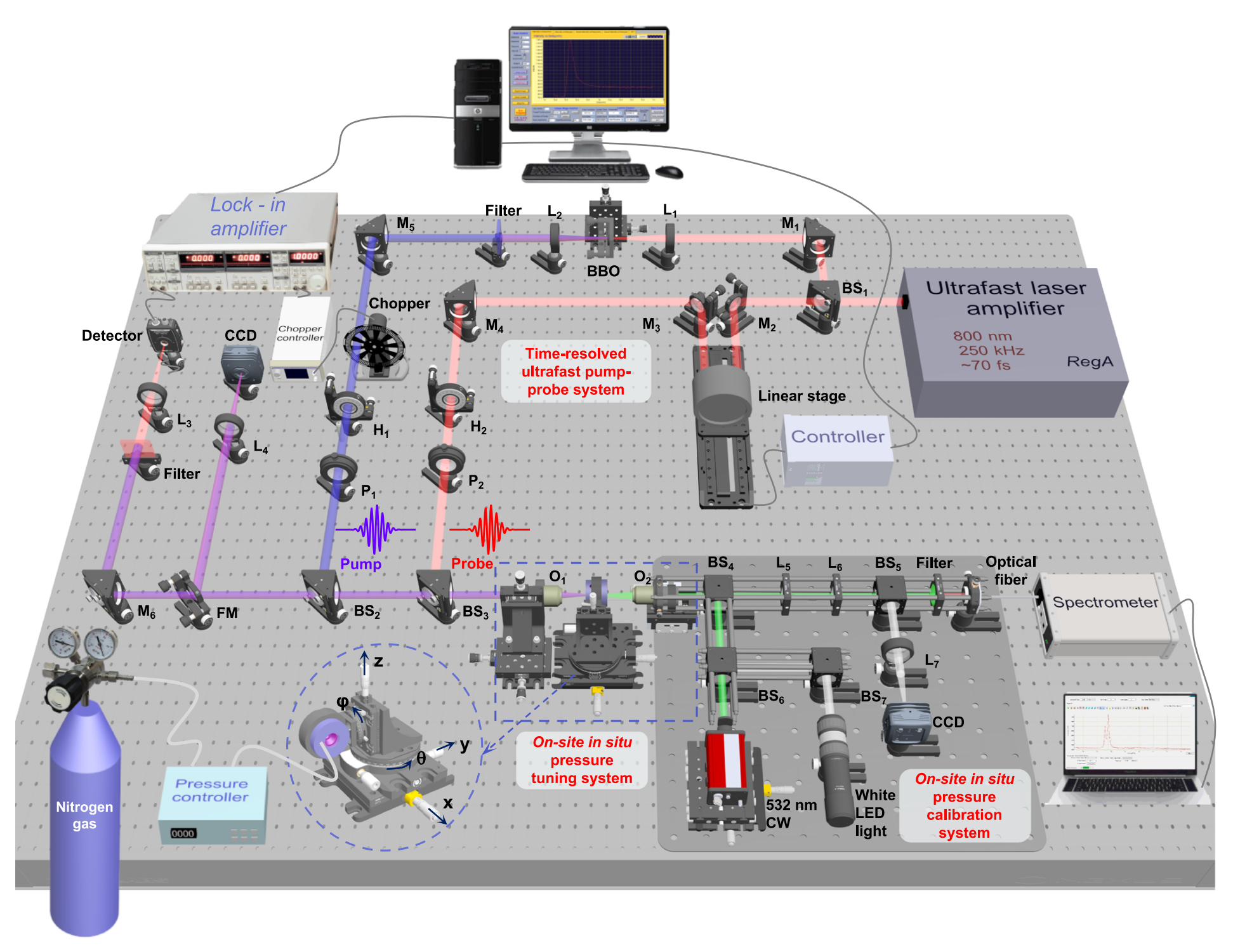
Our group developed an on site in-situ high pressure ultrafast pump-probe spectroscopy setup. The uniqueness and advantage is to keep the sample and diamond anvil cell in the laser path during experiment. There is no need to move or rotate the sample during pressure change or pressure calibration, avoiding the repositioning fluctuation. With this, it can precisely measure the amplitude and lifetime of ultrafast dynamics while most of the work only report the lifetime. This setup is composed of a conventional ultrafast optical spectroscopy setup, on site in-situ pressure tuning and calibration system. This technique is crucial for dual beam spectroscopy experiment. It is more complicated and technically challenging. Key parameters of the setup: pressure range 0 – 70 GPa, time resolution: < 100 fs.
2, Free space ultrafast pump-probe spectroscopy, time-resolved SHG

This setup can be used to measure transient reflectivity, transient second harmonic generation (SHG). With optical parametric amplifier (OPA), different pump/probe wavelengths can be selected. With microscope technique, it can be used to measure tiny samples of a few micrometers. The setup is also compatible with 8 T strong magnetic field or cryostat (10 – 600 K) when necessary.
3, Time-resolved THz spectroscopy and THz radiation
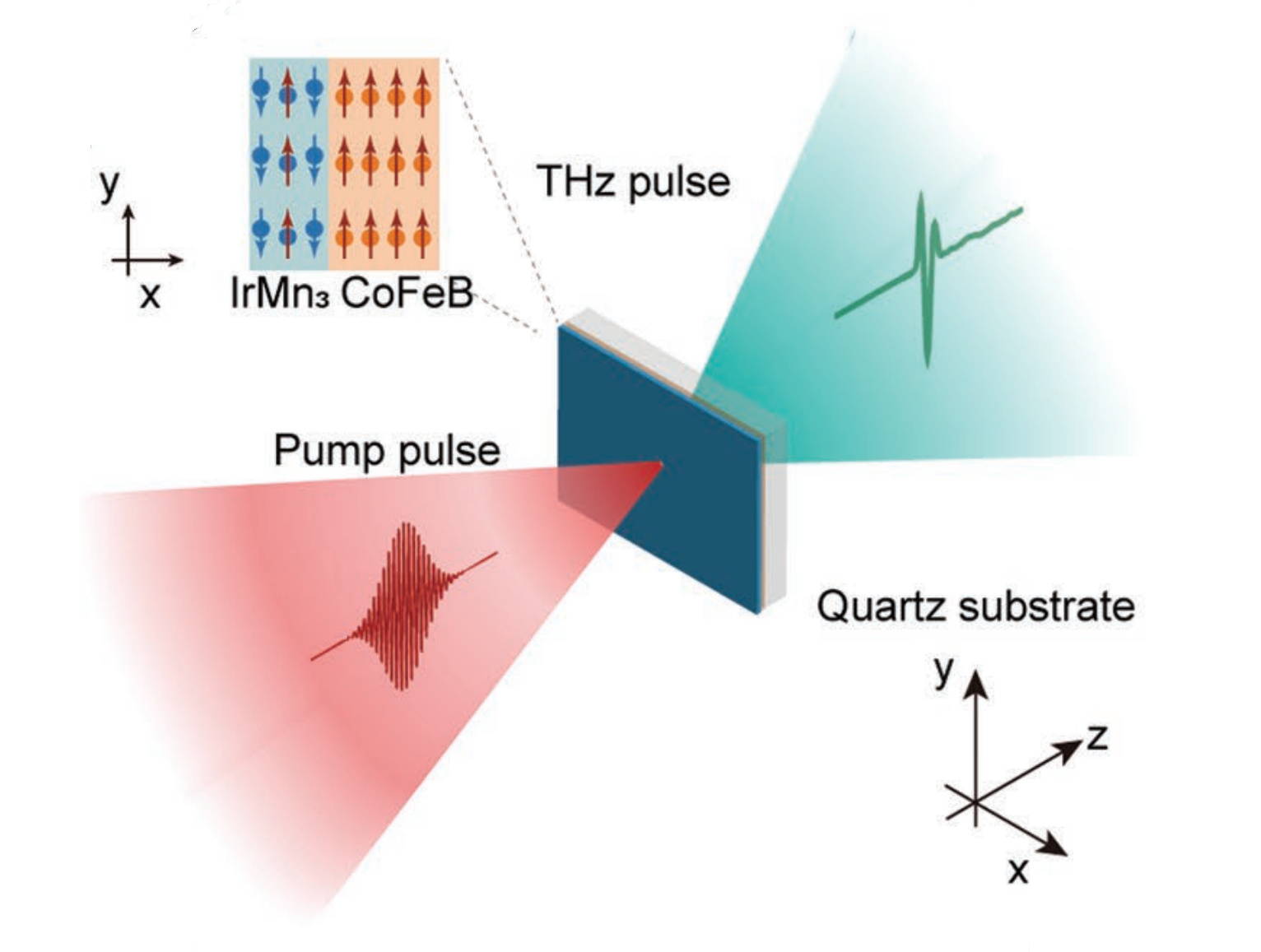
This setup uses LT-GaAs as the THz emitter and detector. It measures the transmission and reflectivity spectrum in the range of 0.1 to 3 THz. With conversion and calculations, we can get the dielectric constant, conductivity, absorption coefficient, etc in the THz range. Besides, it can detect THz radiation from the sample with 800 nm fs laser pump. This setup is equipped with cryostat and external magnetic field when needed.
4, Ultrafast electron and X-ray diffraction for lattice dynamics studies
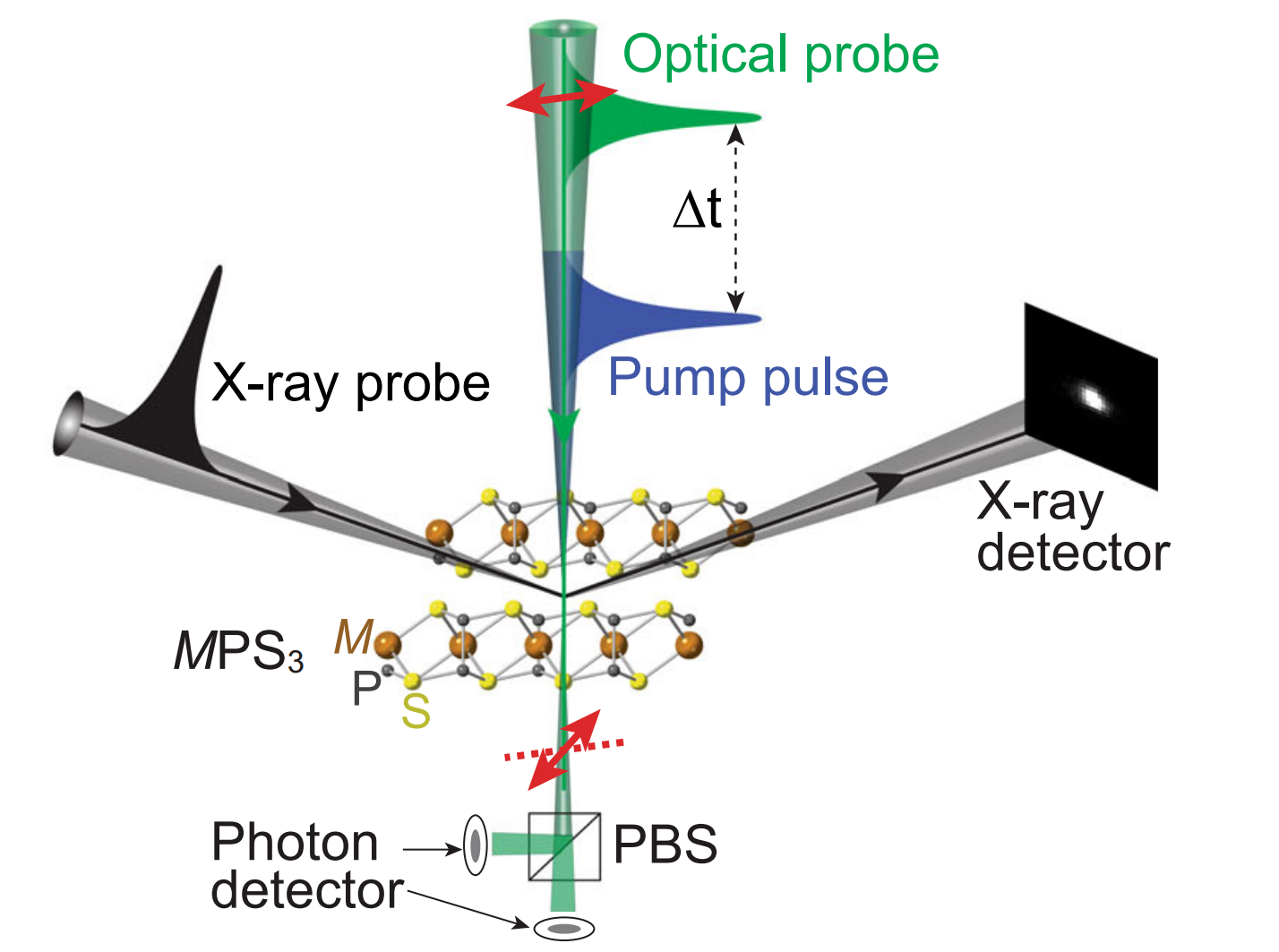
To measure the lattice dynamics, our group applies beam time in ultrafast electron diffraction/microscopy, synchrotron light source, free electron laser facilities, or collaborates with other teams. By measuring the lattice ultrafast dynamics and other optical methods, we can study the coupling between charge, spin, and lattice, which provides new insights in studying quantum materials.


